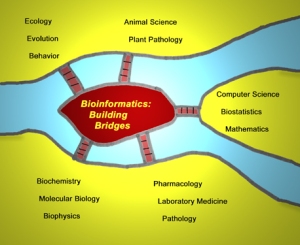What Is Bioinformatics?
|
Bioinformatics is the field of science in which biology, computer science, and information technology merge to form a single discipline. The ultimate goal of the field is to enable the discovery of new biological insights as well as to create a global perspective from which unifying principles in biology can be discerned. At the beginning of the “genomic revolution”, a bioinformatics concern was the creation and maintenance of a database to store biological information, such as nucleotide and amino acid sequences. Development of this type of database involved not only design issues but the development of complex interfaces whereby researchers could both access existing data as well as submit new or revised data.
Ultimately, however, all of this information must be combined to form a comprehensive picture of normal cellular activities so that researchers may study how these activities are altered in different disease states. Therefore, the field of bioinformatics has evolved such that the most pressing task now involves the analysis and interpretation of various types of data, including nucleotide and amino acid sequences, protein domains, and protein structures. The actual process of analyzing and interpreting data is referred to as computational biology. Important sub-disciplines within bioinformatics and computational biology include:
- the development and implementation of tools that enable efficient access to, and use and management of, various types of information
- the development of new algorithms (mathematical formulas) and statistics with which to assess relationships among members of large data sets, such as methods to locate a gene within a sequence, predict protein structure and/or function, and cluster protein sequences into families of related sequences




